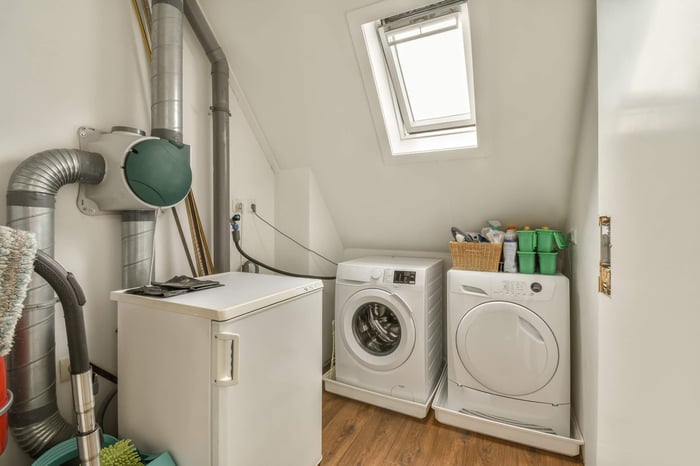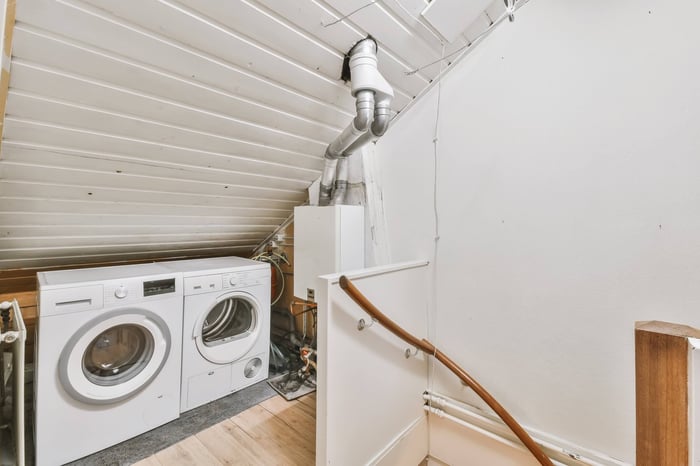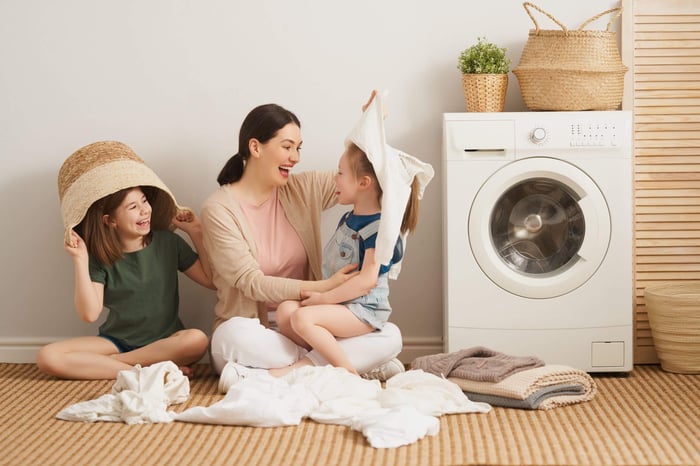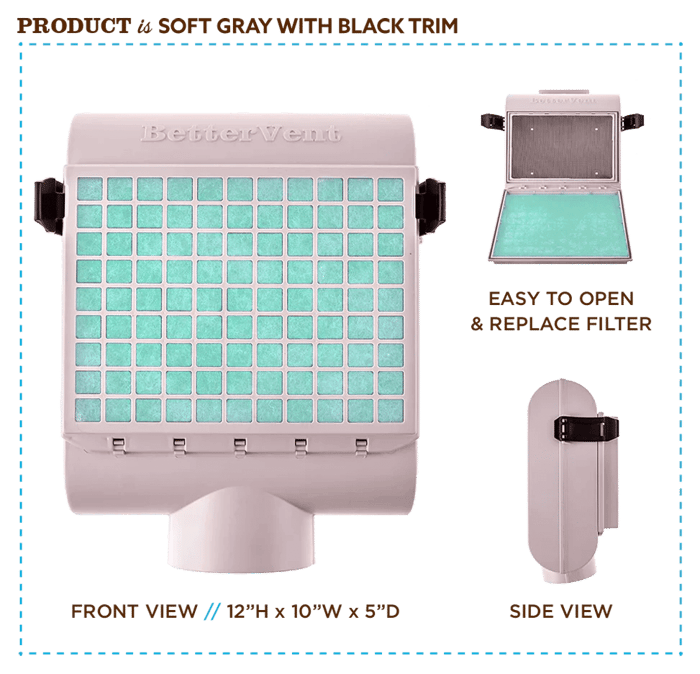If you can’t vent your electric dryer outdoors, a properly installed indoor dryer vent kit is your safest and most effective solution. Filter-based systems like BetterVent offer a waterless, low-maintenance way to redirect warm air indoors while capturing lint and improving air quality.

Can You Vent a Clothes Dryer Indoors?
Yes — but only if you’re using an electric dryer.
Indoor venting is safe for electric dryers when using a certified indoor dryer vent kit. Gas dryers must be vented outdoors due to carbon monoxide risk.
Why Would You Need an Indoor Clothes Dryer Vent?
Indoor dryer vents are helpful when external venting isn’t possible or practical.
Common scenarios:
- 🏢 Apartments or condos with no vent access
- 🧺 Basements or interior laundry setups
- 🛠 Renovations or temporary dryer setups
- ❄️ Cold climates where heat recirculation is beneficial
How Do Indoor Dryer Vents Work?
They connect to your dryer’s exhaust and filter out lint before releasing warm air indoors.
- Filters (mesh or polyester) trap lint and particles
- Clean, warm air is recirculated back into your home
- Helps reduce energy waste during colder months
There are two main types: water traps and filter-based vent boxes.
What Are the Main Types of Indoor Dryer Vents?
1. Water Trap Systems
- Use water-filled containers to trap lint
Pros:
- Low cost
- Simple setup
Cons:
- High maintenance
- Risk of spills, mold, and odor
- Inefficient at trapping fine particles
2. Filter-Based Vent Boxes
- Use reusable and replaceable filters
Pros:
- Waterless and cleaner
- Efficient lint capture
- Built-in safety flaps (on some models)
Cons:
- Slightly higher upfront cost
- Requires filter maintenance
How to Install an Indoor Clothes Dryer Vent (Step-by-Step)
Installing an indoor dryer vent kit is a simple DIY task for most electric dryers.
- Choose a Kit: Look for indoor-use kits like BetterVent that meet safety standards.
- Unplug Your Dryer: Always disconnect power before installation.
- Attach Hose: Connect a 4" duct hose to the dryer's exhaust using a clamp.
- Connect the Vent Kit: Attach the hose to your chosen indoor vent box or trap.
- Position Safely: Place the vent box securely in a low-traffic, well-ventilated spot.
- Test It: Run a dryer cycle to ensure proper airflow and no lint leakage.
🛠️ Pro Tip: Check and clean filters or water reservoirs regularly for optimal performance.
Safety Tips for Indoor Dryer Venting
Indoor venting is safe when proper care is taken.
- Only use with electric dryers
- Clean filters or water traps frequently
- Avoid blocking airflow
- Vacuum around the vent area
- Keep your laundry area ventilated
What Are the Best Indoor Dryer Vent Kits Available?
Product | Type | Water Required | Maintenance | Best Use |
BetterVent | Filter-based | ❌ No | ✅ Low | Daily use, energy savings |
Deflecto Kit | Water trap | ✅ Yes | ❌ High | Temporary setups |
Dundas Jafine | Water trap | ✅ Yes | ❌ High | Infrequent use |
Heartland Trap | Screen filter | ❌ No | ⚠ Moderate | Compact spaces |
Final Thoughts: Venting Indoors Can Be Safe and Simple
With the right setup, you can run your electric dryer safely without exterior venting.
Choose a high-quality indoor vent kit like BetterVent to avoid the mess of water traps and enjoy:
- Clean indoor air
- Recirculated heat
- Lower maintenance
Just remember: proper installation and filter care are key to keeping your home safe and your laundry routine efficient.
Explore BetterVent Indoor Dryer Vent Kit



